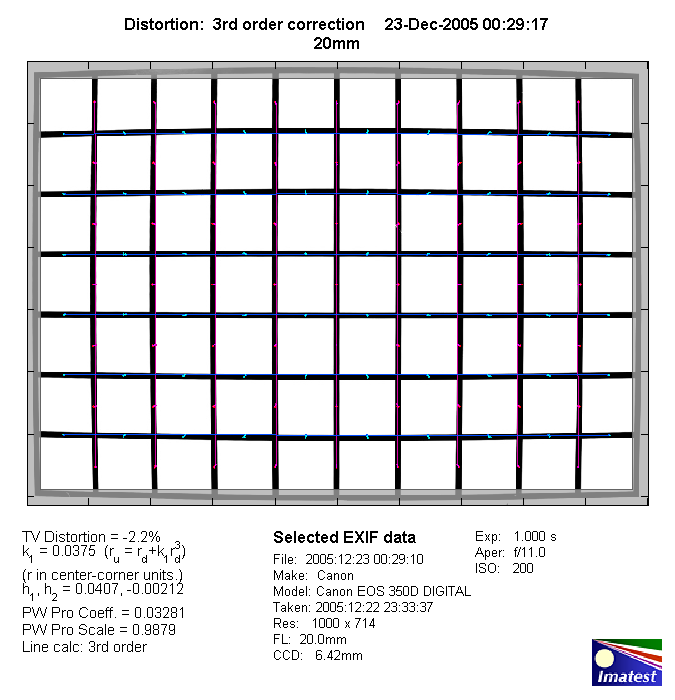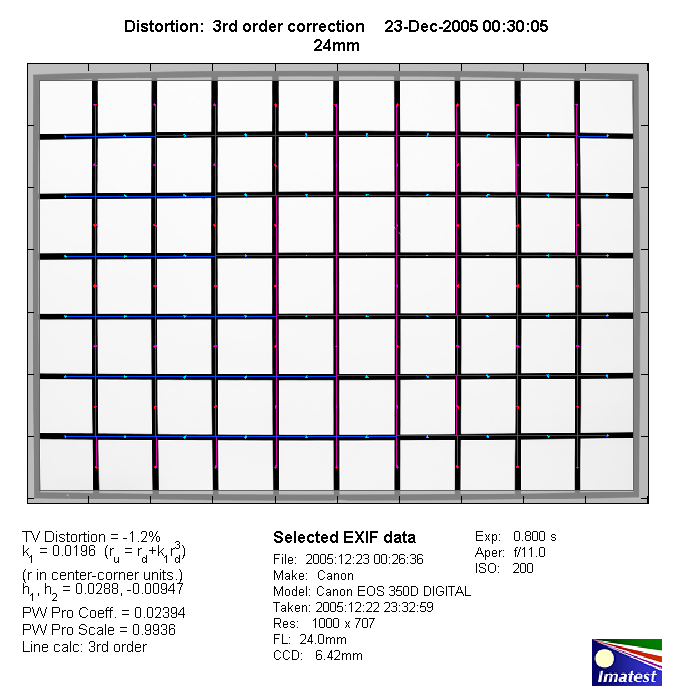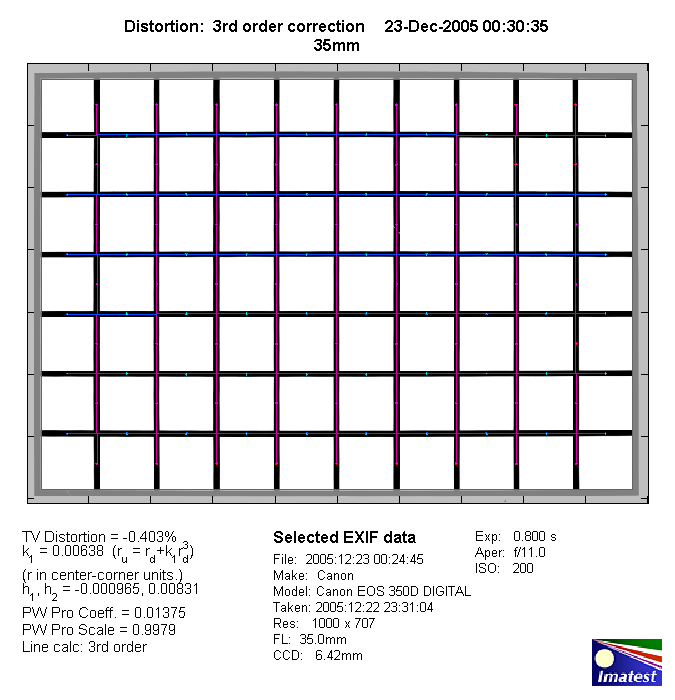|
Canon EF 20-35mm f/3.5-4.5 USM - Review / Test Report - Analysis |
|
Lens Reviews -
Canon EOS (APS-C)
|
|
Page 2 of 2

Distortion
Typical for many ultra-wide lenses the EF 20-35mm f/3.5-4.5 USM suffers from rather
hefty barrel distortion at the wide end of the zoom range. The situation eases
towards the 35mm setting where the lens shows a negligible degree of barrel
distortion.
20mm:

24mm:

35mm:

The chart above has a real-world size of about 120x80cm.
Vignetting
As mentioned above the Canon lens is a full frame lens so on APS-C
it can take advantage of the sweet spot effect. As a consequence
vignetting is relatively low even at wide-open aperture.
At f/5.6 the issue is pretty negligible.

MTF (resolution)
The EF 20-35mm f/3.5-4.5 USM was very difficult to test. Under
optimal conditions the lens is capable to deliver an excellent
center resolution and very good borders throughout the range. This
may come as a surprise because this is also partially better
than the 17-40L but it really isn´t because the zoom range
is rather conservative (1.75x ratio).
You may also have noticed the rather diplomatic phrase "under
optimal conditions" above. That´s because the lens generated some
head aches initially. Usually the test results are obtained at
a specific focus distance where the center performance peaks
(compared to flanking focus settings). From here on only
the aperture is varied. However, the lens freaked out a little
using this produced because at the wide end at f/5.6 and f/8 the
performance was lower than at wide-open aperture before rising again
at f/11. This is typical characteristic of a so-called residual
aberration - a focus shift dependent on the chosen aperture setting.
We´ve seen this kind of behavior before - e.g. in the Canon EF
24mm f/2.8 - but it was quite extreme with the EF 20-35mm f/3.5-4.5
USM where the focus shifted a significant distance towards the
camera (thus producing a slight out-of-focus effect).
This is not so much of an issue when shooting landscapes but
it´s a good idea to do a DOF preview at closer focus settings.
The MTF charts below show the lens performance taken at (almost)
optimized focus settings to compensate the residual aberrations
at the specific aperture setting (which is a little difficult).
Please note that the MTF results are not directly comparable across the different systems!
Below is a simplified summary of the formal findings. The chart shows line widths per picture height (LW/PH) which can be taken as a measure for sharpness.
If you want to know more about the MTF50 figures you may check out the corresponding Imatest Explanations
Chromatic Aberrations (CAs)
Chromatic aberrations (color shadows at harsh contrast transitions) are very pronounced
with this lens peaking in the average CA pixel width of ~1.4 pixels at the image
borders. Not impressive but this is quite typical for zoom lenses of this range.

Verdict
It is a little difficult to find a verdict for the Canon EF 20-35mm f/3.5-4.5 USM.
The lens is capable to deliver a very high resolution which surely
originates in the rather conservative zoom ratio. However, at the wide-end it
suffers from very pronounced residual aberrations so you may run into situations
where you cannot exploit the potential of the lens. If you´re primarily shooting
landscapes with rather long focus distance settings this will not be much of an issue
but for at closer settings you should either choose a small aperture (f/11) or
do at least a depth-of-field preview check. Other than that the lens performed
according to its class. The zoom range isn´t all that attractive on APS-C DSLRs
but it may be worth a look for 1.3x or FF DSLRs (not tested in this scope).
|